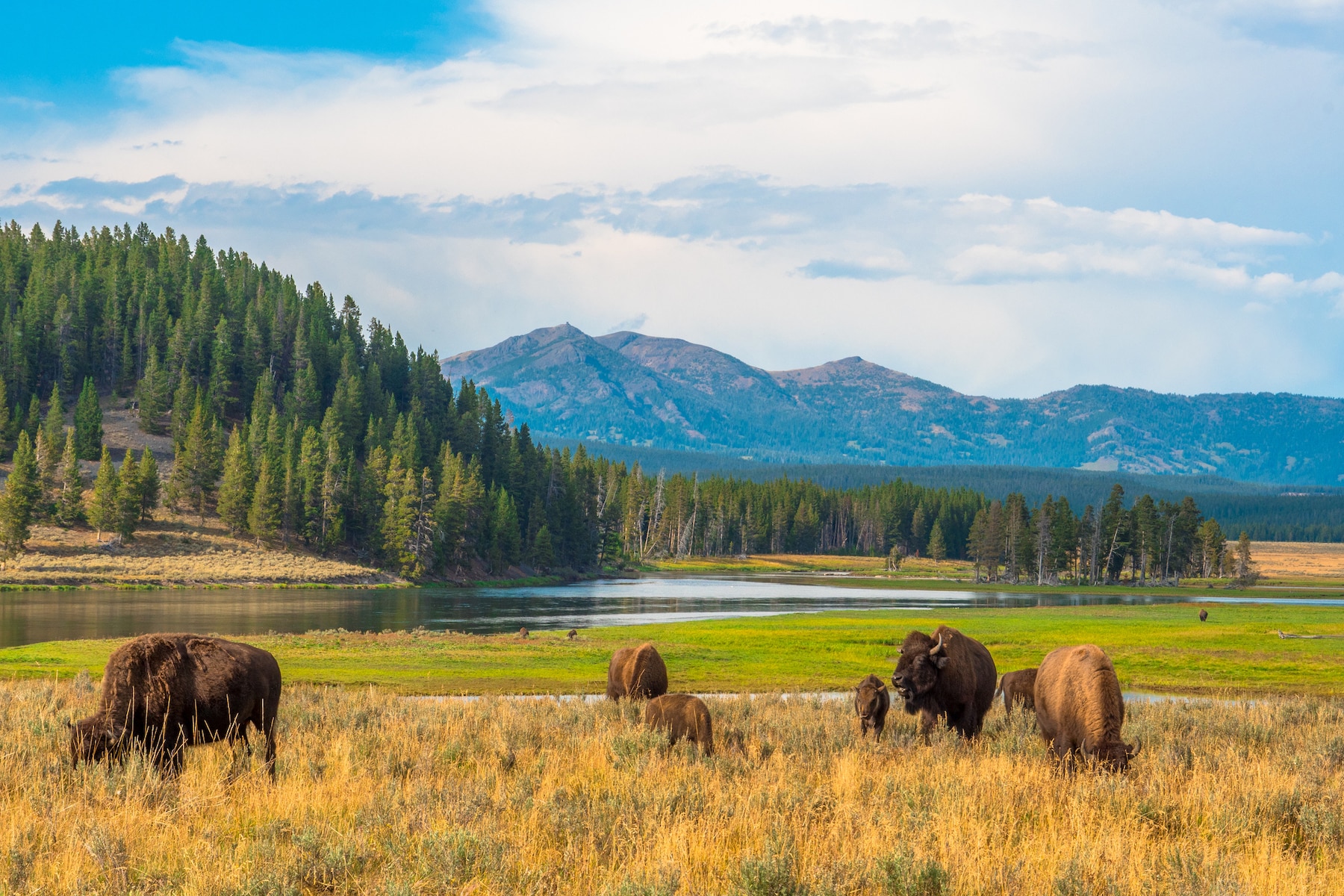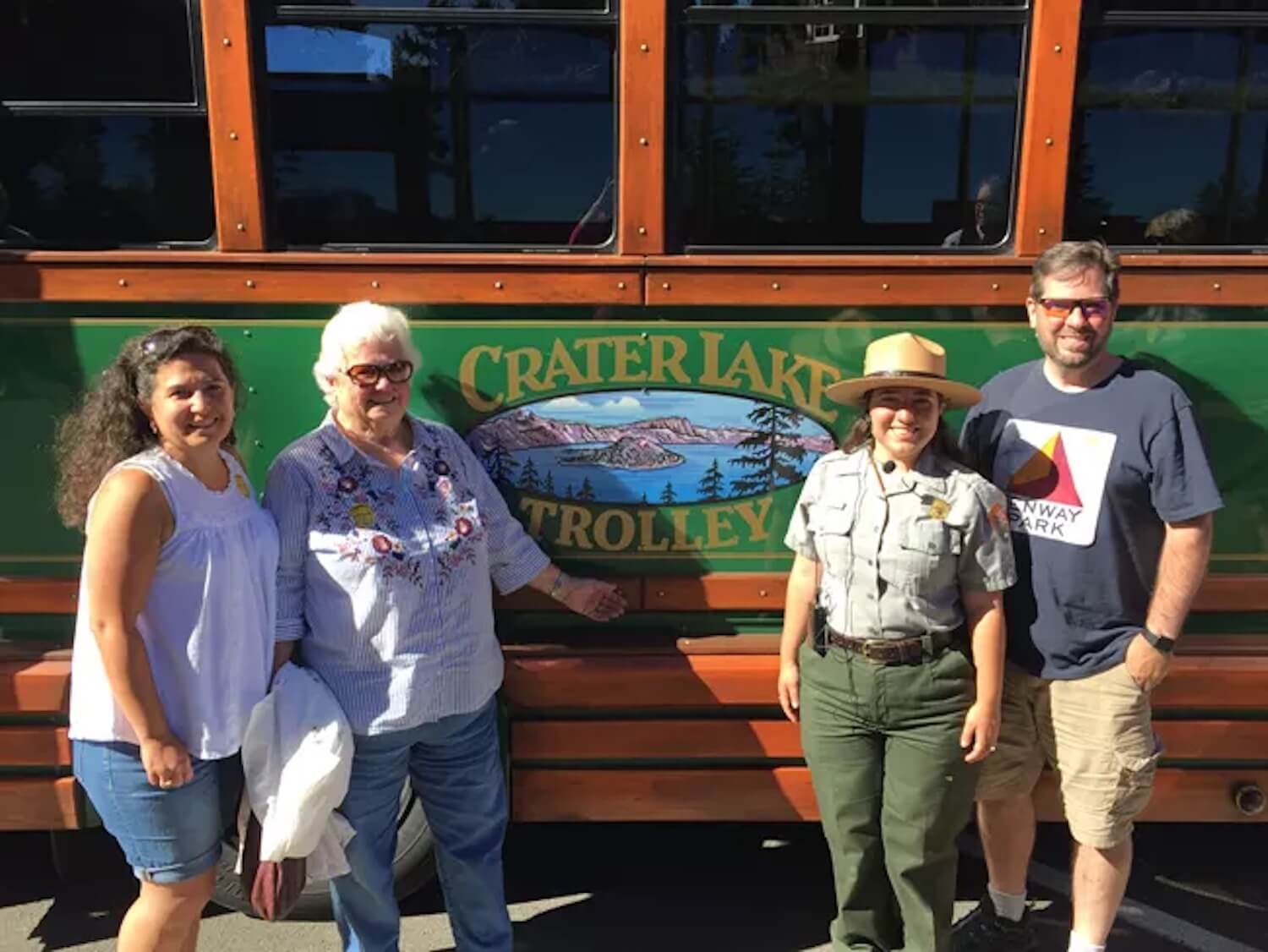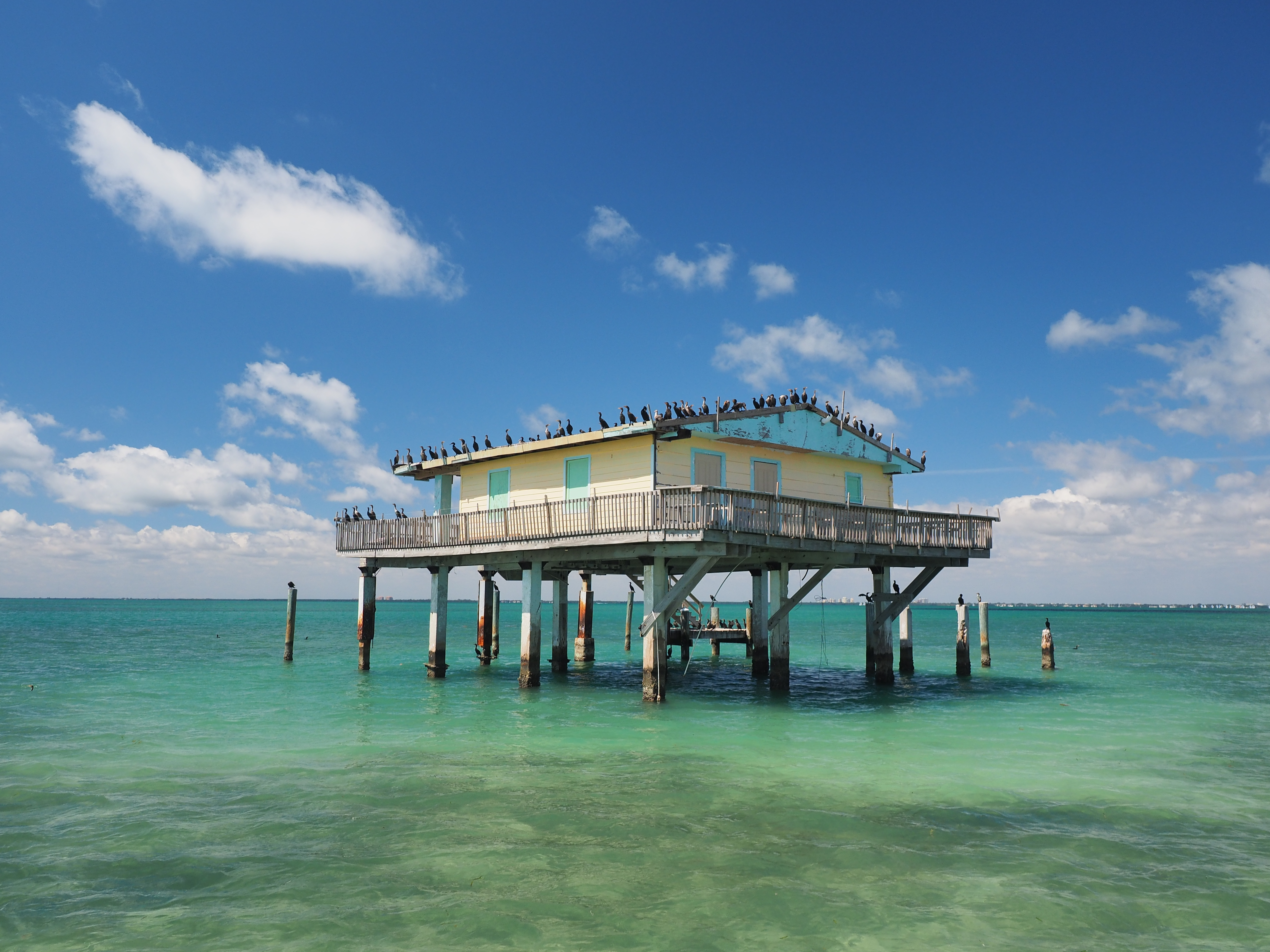The US is full of wide-open spaces. RV travel provides the freedom to go seek out these destinations whenever you hear the call of adventure. You’ve seen the photos, there’s nothing more majestic than a visit to America’s national treasure–one of its 50-plus national parks.
But what if everyone goes to national parks? Will they become overcrowded? During select times of the year, that’s possible. However, good planning can reap big rewards.
Why Stay Near a National Park and Not Inside?

The larger parks, like the colossal Yellowstone National Park, have fantastic campgrounds close to everything you want to see. The downside is having to reserve several months in advance (or sometimes even longer), especially for the high season from June to September when school is out and families are on the road.
If you can, the best times to visit the national parks are either in the spring or fall. Visitation numbers are at their lower at most parks, but the weather hasn’t turned too wintery just yet. That said, reservations are competitive if you can only visit during the summer.
One more item about national park campgrounds: bear in mind they may not always fit larger RVs and most will have limited full hook-up accommodations. If you have a large travel trailer, 5th wheel, or luxury class A motorhome, your choices for national park campgrounds will be more limited than for those with smaller campers.
Additionally, some parks don’t even have a single RV campground. So if you have a tow vehicle you can unhook or you’re towing a vehicle behind your RV, expanding your search to include campgrounds outside of national parks will dramatically expand your selection.
Why Visit The National Parks?
Whether you stay inside or near a national park, you’ll have access to a ton of outdoor activities and attractions to fill your time. Here’s why the national parks are must-visit destinations:
National Parks Have Guided Tours

A huge bonus to our national park system is the opportunity to learn everything about a particular park’s ecosystem, science, conservation practices, and history. Using Yellowstone as an example, you can gather information from well-versed guides on everything from geography to grizzlies.
Plus, you can get guided tours using transportation from bicycles to boats. Even in the winter, there are guides in snow coaches. November and December are likely the best time to get an opportunity to see a wolf in the world’s oldest national park.
National Parks Have Tons of Hiking Trails

Call them self-guided tours if you like but take a map with you. You don’t want to miss the sights on the trail or miss the trail entirely. A lot of effort goes into the proper routing of a trail and it is a continual effort to keep it as thrilling, yet safe, as possible. In many parks, going ‘off-trail’ is incredibly dangerous.
Speaking of putting yourself at risk, heed this advice – think twice (or maybe 3-4 times) before you hike alone. And if you do, make sure someone knows exactly where you’re going, when you’re leaving, what you’re wearing, and what time you should be expected back.
National Parks Have Rangers

No, not the New York Rangers or the Texas Rangers, Park Rangers. Rangers are chock full of the information you need to know about the goings-on for the day (or days) you are visiting.
Where was the last grizzly sighting? Best place to see a bald eagle? The closest place to do some angling? Best place to see wildflowers from the road or the best trail to take to see them? Where’s the nearest waterfall? Where’s the nearest bathroom? How close can you get to a bison?
There is a ton of information you can find out from a park ranger and, by the way, the answer to the last question is 25 yards, at a minimum. I’d double that, just to be safe. They weigh over half a ton and are three times faster than you…even with your shoes off.
National Parks Have Beautiful Wildlife

Yes, you can see a coyote in Chicago if you want to, but you can’t see a badger, a wolf, a grizzly, or a wild horse. Those are generally easier to find in a national park. Some national parks have very specific wildlife and they are often closer to the park’s main roads than you might imagine.
For instance, the Everglades National Park is one of the few places where you can see a manatee. And although you might only want to see them from afar, it’s the only place in the US where crocodiles and alligators share a habitat. As for a herd of wild horses? Get your best chance inside Theodore Roosevelt National Park.
National Parks Have Amazing Scenery

They don’t create national parks where there isn’t anything worth seeing. But what may be awe-inspiring to me, Joshua Tree, for instance, could be nothing but a dry wasteland with short trees to you. Every park will be something different for every person.
The beauty of the national park system is that there is really something for everyone. Want to see the ocean waves crashing on a quiet beach? Try Biscayne National Park. Love to see the Aurora Borealis? Head to Voyageurs National Park. How about a waterfall that looks as tall as a skyscraper? Check out Yosemite National Park.
No matter where you’re heading, and when, you can always find a way to visit the national parks. If the park campgrounds are full, try these campgrounds near a national park that make the perfect home base for exploring the parks. Consider purchasing a Good Sam Membership and receive 10% off nightly rates at campgrounds in the Good Sam network. Those savings can add up if you’re using peak camping season to travel and see the parks. No matter where you go, there’s always a Good Sam campground nearby.
Campgrounds Near Yellowstone National Park
Campgrounds Near Everglades National Park

Campgrounds Near Theodore Roosevelt National Park
Campgrounds Near Biscayne National Park

Campgrounds Near Voyageurs National Park
Campgrounds Near Zion National Park

Campgrounds Near Acadia National Park
Campgrounds Near Great Smoky Mountains National Park
Find out more about this park with the Great Smoky Mountains National Park Guide.

Campgrounds Near Canyonlands National Park
Find out more about this park with the Canyonlands National Park Guide.
Campgrounds Near Congaree National Park
Find out more about this park with the Congaree National Park Guide.

Are there any other reasons to go camping in or near a national park for you? Let us know in the comments below and happy camping!










